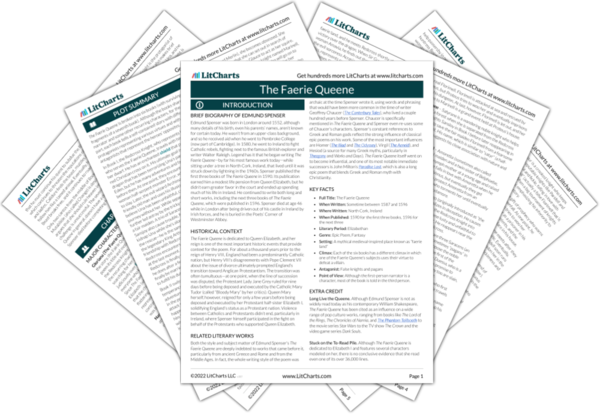Some elements of the poem are unclear, such as why Amoretta wouldn’t be with Arthur here. Other important actions happen “off the page,” such as when Braggadochio steals Sir Guyon’s horse. While it is possible that some of these elements are oversights or continuity errors, such events that happen “outside” the poem also help contribute to its epic scope.
